Abstract 1/2014
Table of content
Tomasz Dybicz – Capacity experimental determination of a merging section from two lanes to one lane on a multilane highway
Wacław Oleksy, Tomasz Rokita – Safety of travelators for passengers transport in ski resorts
Piotr Cupryjak, Mariusz Wasiak – Constituantes of models for public transport master plans – german experiences
Andrzej Soczówka – Organization and integration of urban and regional public transport in the Moravia – Silesian region of the Czech Republic
Anna Weszczak – Traffic safety model for Poland 2002 – 2011
Tomasz Dziedzic, Andrzej Szarata – Selected findings of complex traffic researches in the Małopolskie voivodeship
Abstracts
Tomasz Dybicz
Capacity experimental determination of a merging section from two lanes to one lane on a multilane highway
Abstract: Spots where local capacity limits occur on the roads are colloquially called “freeway bottlenecks”. Active freeway bottlenecks may have a determinant impact on the capacity of the road network and traffic conditions. One of the main reasons of its appearance are connections between permanent or temporary traffic organization and traffic volume. In the case of big gap between supply (local capacity) and demand (traffic inflow) the freeway bottlenecks are activated. One of the characteristics of freeway bottlenecks is a two-capacity phenomenon, where volumes of PQF and QDF can be observed just before traffic conditions breakdown and just before the recovery phase. Without a detailed examination of the characteristics associated active freeway bottlenecks, including PQF and QDF and their impact on traffic conditions an effective dynamic traffic management on freeways is not possible. In the paper volumes of PQF and QDF have been described. There are also presented results of traffic surveys and analyzes carried out on the interlacing section, which was located on merging section from two lanes to one lane before the entrance on the Grota Roweckiego bridge in Warsaw. Surveys were carried on weekdays during morning peak hours in the way enabling to analyze the freeway bottlenecks activating and deactivating processes as well as calculation of the PQF and QDF volumes. In this paper there are also presented traffic volumes in the phase of congestion. Obtained results were compared with results obtained in other countries.
Key words: freeway bottleneck, capacity, two-capacity phenomenon at freeway bottlenecks, PQF, QDF, road network.
Wacław Oleksy, Tomasz Rokita
Safety of travelators for passengers transport in ski resorts
Abstract: This article raises the issue of the safety of passengers transported on travelators operated on the slopes of ski resorts. Travelators are intended first of all to transport children and beginner skiers on the slopes with low inclination. The origin of the subject of this article has been an accident in Poland in 2013 which resulted with serious injury to a five-year skier. This article is an attempt to answer the question whether the technical condition of installations for transport and snow play in the ski resorts should be controlled by an authorized technical inspection as it is in the case of the cableways and ski-tows. The article presents a technical description of travelators and summarizes the ranges of basic technical parameters of travelators produced presently all over the world. The stronger attention in the article is paid to the description of the technical requirements for travelators . The potential hazardous situations that may occur during their operation have been analysed. The specific requirements which should be met by travelators in the field of selection , design and installation on the slopes have been discussed. Particular emphasis is put on the operating safety requirements as service and emergency stops, requirements for brakes, safety devices and control elements.
Keywords: travelators, transport of skiers, transport safety
Piotr Cupryjak, Mariusz Wasiak
Constituantes of models for public transport master plans – german experiences
Abstract: Selected German good practices used for the transport modeling during the preparation of public transport sustainable development plans (colloquially called public transport master plan) have been presented in the article. Transport models are supportive for planners at various stages of working out public transport master plans. In the introduction criterions of the evaluation of the public transport system have been listed and exemplary structure of master plan has been presented. Then practical possibilities of the VISUM software to the transport modeling have been shown. The first stage of modeling is working out a model of the transport network of the selected area projecting the transport network of the area. When the timetable of public transport is projected on this network, it is possible to depict it by the VISUM and to determine characteristics of the transport system. In the next phase of modeling, the area is divided into a transport zones connected with some characteristics. Tools of VISUM allow to present the zones with different colors or at the graphs. Possibility of quick determination of transport accessibility which is a significant factor of transport quality constitutes an important functionality of this software. Forecast of transport needs together with traffic flows’ schedule is the last phase of modeling. Quality of all phases of modeling determines accuracy of decisions concerning the spatial planning undertaken in the scope of public transport development. Only correctly planned and adequately balanced numerical transport model may be the basic of public transport master plan.
Keywords: transport model, public transport master plan, public transport
Andrzej Soczówka
Organization and integration of urban and regional public transport in the Moravia – Silesian region of the Czech Republic
Abstract: The aim of this article is to present the most important rules of organization and operation of urban and regional public transport in the Moravia – Silesian region of the Czech Republic. The article describes main issues related to organization of public mass transport in this area – basic rules of law, organizers, carriers, rules of funding and, basing on the regional transportation plan, the most important problems of this transportation system. Due to practical character of these researches, particular attention is paid to issues related to passenger information system and integrated tariff of Moravia-Silesian region. The study has proved that in the creating and operating process of uniform regional transportation passenger system, all different levels administrative units should participate and cooperate with one another ,. Integration process will not occur independently, coordinator is necessary to participate. The good integration mechanism will encourage to take part in common system additional objects (e.g. communes, carriers). Accessibility for all passengers to transparent and comprehensive passenger information presented in different forms is necessary. The conclusions of these studies are valuable tips for creating and improving integrated transportation systems in Poland.
Keywords: regional transport, integrated tariff, passenger information
Anna Weszczak
Traffic safety model for Poland 2002 – 2011
Abstract: Transport determine the level of regional development but on the other hand, it causes negative consequences. About one million people dies in road accidents every year. It leads to financial and social losses that in Poland reaches up to 2% of GDP. It is very important for economy to indicate factors that cause accidents. The paper is presentation of traffic safety in Poland by the construction of econometric model. The study was undertaken due to elucidate the relationship between number of road accidents and variables selected on the base of literature, such as: local self-government expenditure on section 600 – Transport and connection, the proportion of highways and expressways in total roads in provinces, daily traffic, roads quality measured as the share of roads requiring the immediate repair in total roads and the share of heavy vehicles in total amounts of vehicles. The research was conducted for 2002 – 2011 on NUTS2 level. To estimate the parameters of the equation panel methods, fixed effect method (FEM) and random effect models (REM) were used. Those methods allowed to measure the differences between provinces.
Key words: road accidents, panel data models, transport.
Tomasz Dziedzic, Andrzej Szarata
Selected findings of complex traffic researches in the Małopolskie voivodeship
Abstract: The Cracow University of Technology as a leader of science research consortium has been running the study: Elaboration of the methodology of public transport plan for the Małopolskie voivodeship. The goal of the study was to create the Public Transport Plan for the voivodeship. The basic phase of the research work was construction of the simulation modeling of the area where different scenarios of transport system development in the voivodeship would be tested. The condition of creation of simulation modeling is an access to data basis of inhabitants’ transport behavior. The paper presents selected findings of interviews in the households of the Małopolskie voivodeship. The findings are valuable information concerning inhabitants’ transport behaviors, their habits and factors influencing their decisions and will contribute to elaborate expected passenger services’ standards. They will also contribute for the study of sustainable development plan of public transport in the voivodeship. In the paper the research methodology and sample size, questionnaire form and selected findings have been presented. The results describe tested population as far as the age (with geographical references by the selected age groups), level of non-pedestrian mobility (also with reference to the basic profession of the research participants), average journey’s duration depending on the transport mean or motivation, participation of selected groups in journeys, modal split and evaluation of passenger’s satisfaction. The paper is a publication synthesizing findings of the research.
Key words: complex traffic research, transport behavior, research on transport preferences

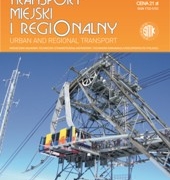 SITK RP
SITK RP 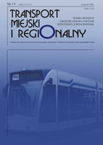 SITK RP
SITK RP 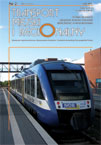 SITK RP
SITK RP 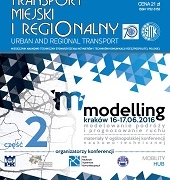 SITK RP
SITK RP 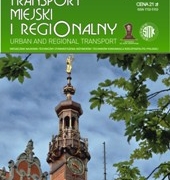 SITK RP
SITK RP 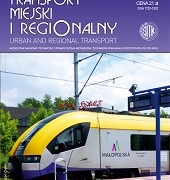

 SITK RP
SITK RP SITK RP
SITK RP